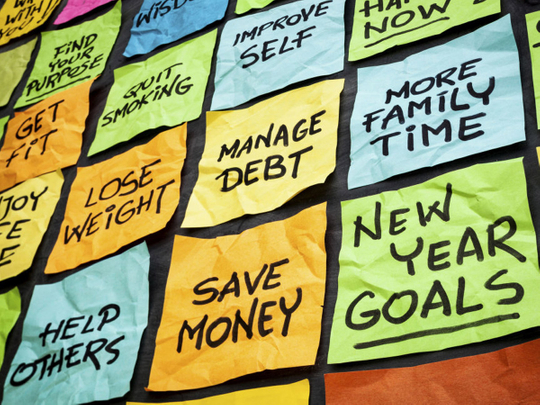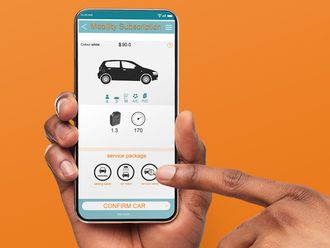
Dubai: Save more, spend less and pay off debt, are popular New Year’s resolutions — and perhaps the ones most likely to fall by the wayside a few months into the year when reality sets in and expenses derail plans. But such early-in-the-year financial setbacks needn’t knock you off course.
“As there isn’t a one-size-fits-all budgeting rule for achieving financial goals, there shouldn’t be a pre-ordained timeline on which it must occur,” opined Mirin Raul, a money coach based in Dubai. “But when it comes to money, we are inclined toward comparing our net worth against our peers.
“It’s very common for a mental block to creep in that causes us to question whether or not we are falling behind financially. It stems from the belief that we all ought to perform on the same scale given that money is often times the most quantifiable marker of success.”
Set specific goals to make them achievable
Raul and Parthiv Patnaik, a Dubai-based financial planner, agree that while broad resolutions like “I want to save more this year” can be a helpful starting point, they make it hard to track your financial progress, particularly by the middle of the year.
“Keeping a specific goal in mind — like a wedding or any family-related event, paying off a credit card with the highest interest rate, or buying a house — puts an amount to your financial goals and gives you something concrete to work toward,” said Patnaik.
“After all, you made those resolutions, so you can change them. And making more specific resolutions that are easier to maintain rather than just giving up could put you in a better financial position next year. There are ways to get back on track.”
Goals within reason makes you stress-free
Also, make sure goals are within reason and won’t cause added stress, the planners reiterated. “It may be tempting to set an ambitious savings target, but stay within a range that makes sense for your income and regular expenses,” said Raul.
Setting achievable targets is important as well, as it will be particularly overwhelming when you check in on your finances to see how you are doing. “Trying to do too much too soon is just going to make you jaded with the process — you’re going to burn out,” she added.
“If the goal is achievable and you can track your progress, you've suddenly reduced a lot of the uncertainty that gives us that feeling of behind-ness of anxiety in the world of money. And even if it's a small goal, that progress starts giving you the feeling of control, again.”
How often should you check in on your goals?
How less frequent you are in checking in on your finances can be just as stressful, Patnaik flagged. “Don’t do it only once a year. Set up midyear, quarterly or monthly appointments with yourself or your financial planner, if you have one, as this allows you to change your goals if needed,” he said.
“Choosing a check-in interval that feels reasonable for you to regroup – long enough that you’ll have made progress but not so long that there’s no time to pivot if necessary – will definitely help ease any budget-induced stress.
Patnaik further noted that keeping track of your financial progress too many times throughout the year also can add an unnecessary mental load to your plate. So he suggested implementing some automation to your money goals, like a monthly account transfer you can set and forget.
"A Personal Strategy Map can help you make the big choices," said Iyengar, in her book ‘Think Bigger’. “You want to be strategic about choice, because it is the only thing you have that enables you to create the person you want to be in future.
“First, do an evaluation of what worked and what did not. Think of it as a performance review. Cut the list down. You cannot make progress on every possible front, since there is a limited amount of time in the day,” she explains in her book.
Iyengar further noted that if you narrow your goals down to approximately five to seven, you can “focus your energy and make real progress”. “Once your Personal Strategy Map is concrete, revisit it occasionally throughout the year to monitor your progress,” she added.
Bottom line
Raul and Patnaik both deemed the use of a ‘Personal Strategy Map’ as a widely recommended method that can evidently help you not get so fixated on a particular financial goal that you are setting yourself up for failure. This is integral to not lagging behind on your goals henceforth.
"I have noticed savers who set non-specific financial goals at the start of the year get too attached to goals, but not how to get there. See your goals as nothing but moving targets. If you can get a grasp of the essential purpose, then you will have more flexibility in terms of options," Raul added.











